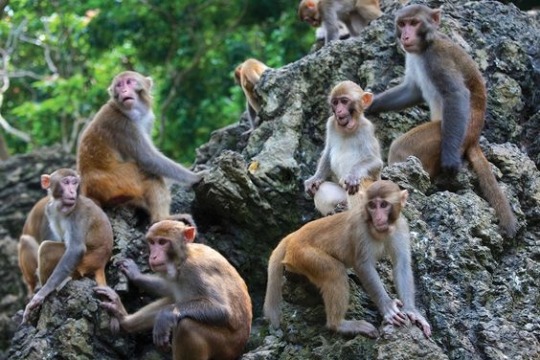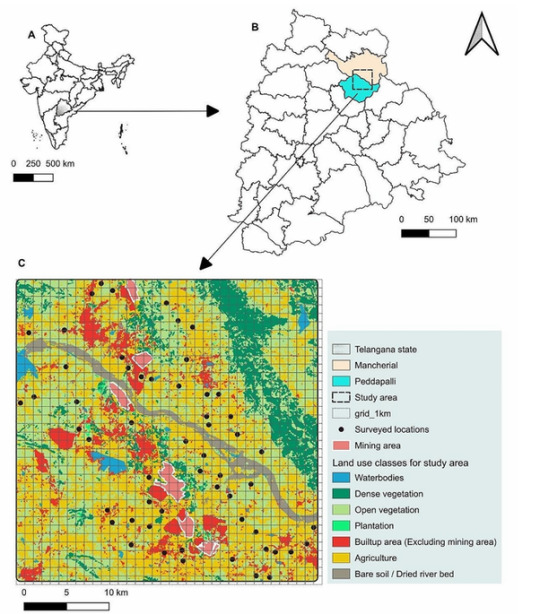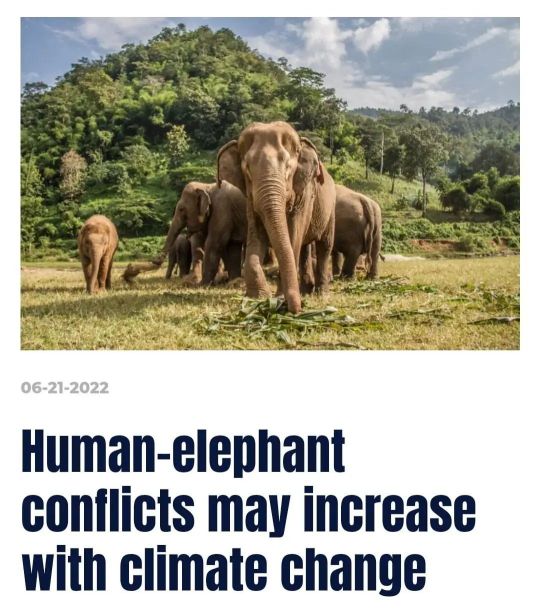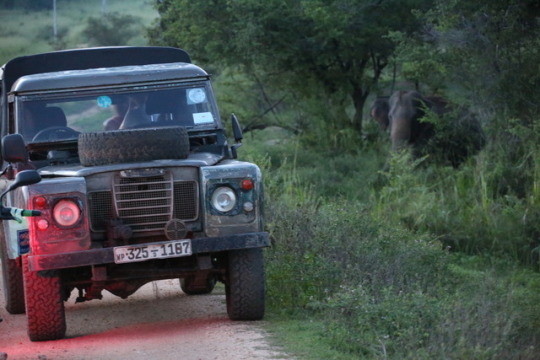#HumanWildlifeConflict
Explore tagged Tumblr posts
Link
#Rajasthan#Baghere#Wildlife#WildlifeReserve#CameraTrap#Calculation#HumanWildlifeConflict#ForestDepartment#News#GNewsPortal
0 notes
Text
If When There is Water…There is Too Much Life
ITA version ESP version
The variation in water availability has major global consequences. Just think of the crises that hit cities when some pollutant is found in drinking water. In nature, even large animal herds strongly depend on water, moving with the first rains or large rivers, gathering and reproducing where water is plentiful. However, changing climatic conditions could disrupt the rhythms of animals: rising temperatures and changing precipitation patterns are leading to significant net losses of surface water. By the end of the century, 50% of the Earth's land is predicted to be covered by arid areas. The first to be affected will be large herbivores already suffering from the current reduction in water quantities. Rising temperatures accelerate the seasonal drying of plants, reducing the water available through food. Direct water losses will increase, and animals will be forced to move more frequently to find new water sources, gathering where water is present and changing migration routes and times. Water will become a resource to compete for. Large predators will gather around the few remaining water sources, attracted not only by thirst but also by prey concentration. Aggregating around a few water sources during drought periods will also imply the rapid transmission of pathogens, especially if the water is contaminated.
These changes will affect the health of wildlife and livestock and increase human-wildlife conflicts. Large wild and domestic herbivores will have to balance their food and water needs while competing with other species. In many African regions, livestock farming is common where large quantities of water and wildlife are present, so competition for this resource will increase between wild and domestic animals. Dr. Viviana Martinez and collaborators recently published a concrete example of what could happen on a large scale. During their research, they studied for two years the relationship between temperature, precipitation, and water supply patterns at the Ol Pejeta Conservancy in Kenya, home to over 24 large herbivore species. The reserve is fenced with wildlife corridors and hosts about 7000 Boran cattle raised by local communities. The researchers installed five pairs of water basins, where in each pair, one basin was permanently filled and the other experimentally drained. Each water basin in a pair was located within 2.5 km of the other, and the pair was grouped in a "matrix" site randomly located 1.5 km from the full control basin and at least 1.5 km from any other water source. Scattered around the matrix were camera traps that activated when animals passed by, allowing the monitoring of interactions both near and far from water sources.
The results showed that camera traps were significantly more active near water sources compared to other sites, confirming greater activity. This increase was particularly evident during the hottest days of the year and in dry months. The observed species (except buffalo) increased their activity around filled water sources, resulting in a higher probability of interspecific contacts, about two to three times higher. However, when new water sources were introduced, or existing ones were reactivated, interspecific contacts did not increase immediately. Species such as cattle and elephants, which tend to dominate these spaces, can initially exclude other species, leading to cascading behavioural changes. Another important finding was that less water-dependent species could take longer to adapt their foraging behaviours to new water sources.
When water was removed, the composition of contacts between different species changed, mainly due to the movements of elephants and cattle, which influenced interaction dynamics. However, some herbivore species continued to overlap in drained water basins, probably because such basins offer food resources like grazing lawns or because these species are slower to adapt to changes compared to human-raised cattle or elephants. Interestingly, the presence of elephants and cattle was a driving force behind all other species dynamics. Elephants showed a higher probability of contact with other species on hot days, accessing water in the early afternoon when temperatures were higher, but if cattle were present, their behaviour changed, visiting water earlier to avoid direct competition. Cattle generally showed consistently high levels of aggregation near water during hot days, due to routine grazing and water visits managed by humans, interacting a lot with other species and affecting water arrival dynamics. This behaviour of cattle, with strong aggregation, could facilitate the transmission of diseases shared with other species like buffalo, which avoid water during the middle of the day, preferring early morning or evening, thus reducing competition.
The results obtained through this study are extremely important for the conservation and survival of species, with implications for the management of natural resources and the mitigation of conflicts between wildlife and human activities, especially in climate change scenarios. Promoting sustainable systems, such as creating water sources reserved for wildlife during hot seasons, could reduce competition and the risk of disease transmission between wildlife and livestock.
source article
source picture

#water#climatechange#wildlife#conservation#species#herbivores#predators#humanwildlifeconflict#cattle#buffalo#elephants#biodiversity#research#environment#sustainability#drops of science
1 note
·
View note
Text
Unearthing Conflict: How Mining Shapes Human-Primate Encounters in Southern India
A recent study by researchers Anand, S., & Radhakrishna, S. (2024) delve into the impact of mining on human-primate conflict in southern India. Through a blend of household surveys and geospatial analysis, they explore how alterations to the landscape due to mining activities shape the dynamics of conflict between humans and primates in coal mining regions.

In a coal mining region of southern India, researchers delve into the intricate interplay between human activities and wildlife dynamics. Through a meticulous blend of household surveys and geospatial analysis, they unravel the impacts of mining-induced landscape changes on human-primate conflict. Unlike traditional conflict scenarios, where crop damage often takes center stage, house-raiding emerges as the predominant form of conflict. The study took place in Ramagundam Coal Belt region, situated in the Mancherial and Pedapalli districts of Telangana state, southern India, is part of the expansive Godavari Valley Coalfields (GVCF). Initially explored in 1886, the mining region has steadily expanded to encompass an area of 17,000 km2 across several districts. The Ramagundam area, in particular, has been a focal point of intensive mining activities since 1974.

Location of study area and selection of survey locations
Results revealed that, unlike typical rural conflict scenarios, house-raiding emerged as the predominant conflict form, with minimal crop damage instances. Primates exhibited avoidance behaviors towards mining areas, with conflict incidents escalating further away from mines. Landscape features, particularly monospecific plantations correlated with reduced crop damage but increased likelihood of house-raiding incidents. Analysis of long-term land cover changes highlighted the correlation between the expansion of built-up areas and increased human-primate conflict interactions, particularly with rhesus macaques moving towards human settlements. The research sheds light on the intricate connection between mining operations and human-primate conflict, highlighting how human-induced changes to landscapes significantly influence wildlife behavior and conflict patterns.
Source 👉 Anand, S., & Radhakrishna, S. (2024). Does Mining Escalate Human-Wildlife Conflict?: Insights from Human-Rhesus Macaque Conflict in a Coal-Mining Region in Southern India. Human Ecology, 1-13.
#animalprotection#conflictmitigation#ecology#environment#environmentindia#environmentind#forest#humanwildlifeconflict#india#monkeys#news#primates#ramagundamcoalbelt#research#southindia#telangana#wildlife
0 notes
Text
Wild bears in Istria, Croatia
A new blog and this blog discusses the recent sightings of bears in Istria, Croatia, and offers advice on how to stay safe in the event of an encounter. With insights from local hunters and experts, readers will learn about the behavior of bears in the region and gain practical tips on how to minimize the risk of a dangerous encounter. Whether you're a local resident or a visitor to the area, this informative post provides valuable insights into coexisting with wildlife in the beautiful region of Istria. Read more on: https://photographbyjohn.com/blog/bear-in-umag/
#BearEncountersIstria WildlifeSafetyTips CoexistingWithNature IstriaCroatiaBears ConservingEcosystems BearSprayTips HumanWildlifeConflict Ist#Istria VisitIstria CroatiaFullOfLife ExploreIstria AdriaticCoast IstriaTourism IstriaTravel IstriaCulture IstriaHistory IstriaNature IstriaB
0 notes
Video
instagram
Reposted from @elephant_stories_with_fiona - Ohhhhh #orphanbabyelephant #kiasa, she has an interesting look here, this is the latest.... “chapeau d’afrique”. 🐘😉 You can foster little Kiasa and be her foster parent. She was rescued by the great people at the #Sheldrickwildlifetrust in #Nairobi #Kenya. They do an incredible job in wildlife conservation and have worked tirelessly for 25 years to rescue orphan baby elephants and transition them back into the wild. It’s a process which takes many years of dedicated service. So always know your support is contributing towards elephants like little Kiasa here to go back into the wild. No matter one foster, two, three or more....you are helping with elephant conservation. 🐘💙 #thedavidsheldrickwildlifetrust #orphanelephants #bantheivorytrade #humanwildlifeconflict #saveourelephants #elephants #africa Is Kiasa your foster baby? Our elephant community would love to know. 🐘👌🏻 @dswtfosterparents - #regrann https://www.instagram.com/p/B0GxhDzgJ7s/?igshid=vwjpaxzlc3bi
#orphanbabyelephant#kiasa#sheldrickwildlifetrust#nairobi#kenya#thedavidsheldrickwildlifetrust#orphanelephants#bantheivorytrade#humanwildlifeconflict#saveourelephants#elephants#africa#regrann
2 notes
·
View notes
Video
youtube
How to build and install a beehive fence to stop elephants and save crops
1 note
·
View note
Photo

Reposted from @mountkenyatrust According to a study by a team of researchers from the University of Tokyo, #ClimateChange is increasing the chance of human-elephant encounters, as shifting environmental conditions lead to changes in the behavior and distribution of elephants. By using a risk assessment framework, combined with data on the recent spatial distribution of human-elephant conflict (2000-2019) in Thailand, the scientists investigated how these conflicts may develop in the near future (2024-2044), under different scenarios of future climate and socioeconomic conditions. ➡️ Read more; https://www.earth.com/news/human-elephant-conflicts-may-increase-with-climate-change/ #econews #elephantconservation #HumanWildlifeConflict #HumanElephantConflict #wildlifeconservation #climatechangeisreal #globalwarming #wildlifemigration #wildlifemovement https://www.instagram.com/p/CfWQhkFKsqQ/?igshid=NGJjMDIxMWI=
#climatechange#econews#elephantconservation#humanwildlifeconflict#humanelephantconflict#wildlifeconservation#climatechangeisreal#globalwarming#wildlifemigration#wildlifemovement
0 notes
Photo

#MammalMonday…Hunting Black-backed Jackal. Though so often vilified, they are just too gorgeous & a necessary ecological player. #jackal #humanwildlifeconflict #wildlifeofsouthafrica #southafricanmammals #conservation #scicomm #canine #canid #lupulella #wildlifephotography #naturephotography #mammals (at Mountain Zebra National Park) https://www.instagram.com/p/CRg6NsypKrz/?utm_medium=tumblr
#mammalmonday#jackal#humanwildlifeconflict#wildlifeofsouthafrica#southafricanmammals#conservation#scicomm#canine#canid#lupulella#wildlifephotography#naturephotography#mammals
0 notes
Photo

African Wildlife Conservation, Safari Tourism and CoVid-19 Great analysis by Josep Oriol 📢Learn more. Have a look at our new blog post 📢 ➡️ https://v-adventures.com/wildlife-conservation-covid/ #TourismStrong #Africa #safari #tourism #travel #covid #conservation #community #ClimateChange #wildlife #nature #environment #sustainability #climate #safaris#ecosystem #OkavangoCapital #HumanWildlifeConflict #LionLandscape #WhatWeCanDo #lion #elephant #rhino @josep.oriol.58 @lionlandscapes @ndutusafarilodge https://www.instagram.com/p/CEuNWIHsaY2/?igshid=gbkarqis41go
#tourismstrong#africa#safari#tourism#travel#covid#conservation#community#climatechange#wildlife#nature#environment#sustainability#climate#safaris#ecosystem#okavangocapital#humanwildlifeconflict#lionlandscape#whatwecando#lion#elephant#rhino
0 notes
Link
0 notes
Photo

Through the shadows I walk, into the darkness I prowl, ever closer to my meal, inch by inch, without crackle, without sound. My silence is your deception, and my adaptability is my secret. Together my speed, strength, and agility make me the Prince of the Savannah, the Lord of the Shadows. But my survival is threatened by poachers that want to sell my skin to those believe that it is a symbol of wealth and my bones for Chinese medicine, and habitat destruction and by farmers killing me. You see my one problem is that I am not choosey about my prey and I sometimes end up killing livestock as they are easy to kill. #leopard #bigfive #africa #india #bushlife #predator #poetryinmotion #savannah #beauty #cat #bigcat #humanwildlife #humanwildlifeconflict #poaching #habitatloss #extinction #extinctionrebellion #endextinction #extinctionisforever #exploitation #leopardslivesmatter #bigcatsmatter #wildlife #wildlifematters @dream_of_africa_ @conservationtravelafrica @africa_nature @animalplanetindia @wildlife.hd @world_wildlife @wildlife @wildlifesos @wildlifeplanet (at South Luangwa National Park) https://www.instagram.com/p/CBaOajdpReB/?igshid=1l5s4avu2imij
#leopard#bigfive#africa#india#bushlife#predator#poetryinmotion#savannah#beauty#cat#bigcat#humanwildlife#humanwildlifeconflict#poaching#habitatloss#extinction#extinctionrebellion#endextinction#extinctionisforever#exploitation#leopardslivesmatter#bigcatsmatter#wildlife#wildlifematters
0 notes
Photo

#humanwildlifeconflict #environmentind #india #news #kerala #animallovers #AnimalProtection #animalrights #animals #conservation #conflict #study #research (at Kerala, India) https://www.instagram.com/p/CbcIpT0K4Ta/?utm_medium=tumblr
#humanwildlifeconflict#environmentind#india#news#kerala#animallovers#animalprotection#animalrights#animals#conservation#conflict#study#research
0 notes
Photo

This work in progress is peaceful and I do hope these two lives find peace after what they’ve been through. No animal should go through what they’ve been through. May the ones responsible for the most tragic event be put through justice. Remember a life for a life. Their blood will never wash off no matter how many times, for their the shackles and chains that they’ll carry for all time. Put an end to #HumanWildlifeConflict . #Kerala #elephants #animals #wildlife #EnoughIsEnough #elephant #acrylic #painting #acrylicpainting #arteza #heaven #restinpeace #justice #neverforgotten #remembered #wildlifeart #art #illustration #NeverForget #voiceless #endcruelty #wip #workinprogress #protectelephants https://www.instagram.com/p/CBOe2IPguuD/?igshid=ovqloa9tcjrj
#humanwildlifeconflict#kerala#elephants#animals#wildlife#enoughisenough#elephant#acrylic#painting#acrylicpainting#arteza#heaven#restinpeace#justice#neverforgotten#remembered#wildlifeart#art#illustration#neverforget#voiceless#endcruelty#wip#workinprogress#protectelephants
0 notes
Photo

KENYA 🇰🇪 MOURNS TIM . . . . It’s sad that you have rested. Tim was one of Amboseli’s largest and best-known elephants, He died 50 years of Age Tim lived a great life but also a traumatic one, he had lost his family , Friends including his sister Tallulah who died in 2003 Tim was a representation all of the different values, positive and negative, that humans place on an elephant’s life. 1. To poachers he was a target for making MONEY 2. To farmers he was a costly nuisance- #humanwildlifeconflict 3. To tourists he was a great attraction- every tourist visiting #amboseli desired to see #tim and 4. To conservationists he was a symbol of hope that efforts in conservation are working Rest In Peace Tim This is Kenya 🇰🇪 A Land we love #tim #elephant #amboselinationalpark #amboseli #conservation #wildlife #wildlifephotography #restinpeacetim #kenya #kenyawildlife #humanwildlifeconflict #tourist #elephantsofinstagram #walkforelephants #beautifuldestinations #pictureoftheday #shutterstockcontributor #love #instagood #safari #safariphotography Picture Credits to the photographer who took it . (at Amboseli National Park) https://www.instagram.com/p/B8LwfMQF-6v/?igshid=18dnx06mu1cr0
#humanwildlifeconflict#amboseli#tim#elephant#amboselinationalpark#conservation#wildlife#wildlifephotography#restinpeacetim#kenya#kenyawildlife#tourist#elephantsofinstagram#walkforelephants#beautifuldestinations#pictureoftheday#shutterstockcontributor#love#instagood#safari#safariphotography
0 notes
Link
You can’t wear a mask once and feel you’ve protected yourself against Covid-19. You need to wear that mask every time you go out to the grocery. Similarly wildlife conservation can’t survive when we make just one donation. Of course, one-time donations are super welcome, much appreciated and helpful. However, they can’t sustain wildlife conservation.
0 notes
Photo

Students witness human-elephant conflict first hand
During a current placement in Sri Lanka, Deakin students witnessed close encounters between traffic (including motorcycles and tuk-tuks) and elephants. Here, students led by expert guides have positioned their vehicle to warn locals of the possible danger.
1 note
·
View note